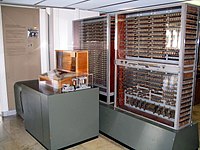Floating-point arithmetic

Floating-point arithmetic is a way of doing math with numbers that have fractions or decimals. Instead of using regular numbers like 1,2,3, or 4, floating-point arithmetic uses what are called "floating-point numbers". These numbers are like regular numbers, but they are made up of two parts: a "whole number" part and a "fractional" part. The whole number part tells us how many whole numbers are in the number (for example, 2 in the number 2.5). The fractional part tells us what fraction of one to add to the whole (for example, 0.5 in the number 2.5). So, when we use floating point arithmetic, we are able to add numbers with fractions and decimals.
Related topics others have asked about:
